Understanding TLS 1.3 connections with wolfSSL.
wolfSSL is an open source, widely-used encryption library used to secure billions of connections.
This is a packet inspection exercise for one of the wolfSSL examples, specifically the client-tls13 and the server-tls13.
The encryption libraries work on a variety of platforms. Here we will be using Visual Studio 2019 (on Windows) with the VisualGDB extension debugging Linux code in WSL.
First, the server app is started. It is listening on all available local networks.
One of those networks is of course home 127.0.0.0 and the server will assume itself to be at 127.0.0.1.
Next, the client is started, single stepping for this exercise. The default parameter for the VisualGDB examples is an address also on the home network: 127.0.0.2
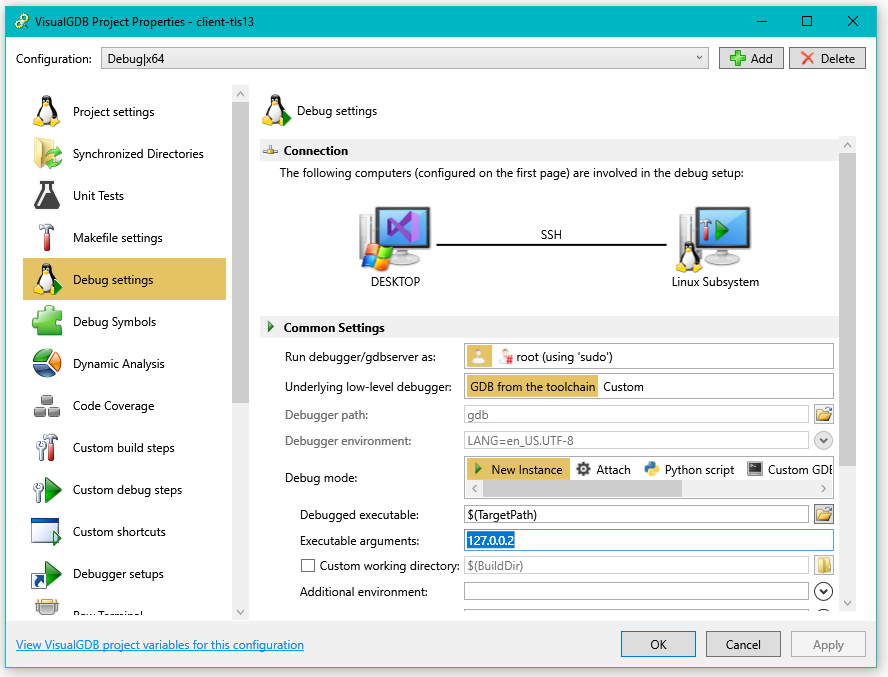
When running WireShark, this filter could be useful to only look at interesting packets for this exercise:
(ip.src == 127.0.0.1 || ip.src == 127.0.0.2) && (ip.dst != 239.255.255.250)
The first client operation is this initial opening of a socket:
/* Connect to the server */
if ((ret = connect(sockfd, (struct sockaddr*) &servAddr, sizeof(servAddr))) == -1) {
Here we see the initial TCP [SYN], [SYN-ACK], and [ACK] packets from the above connect():
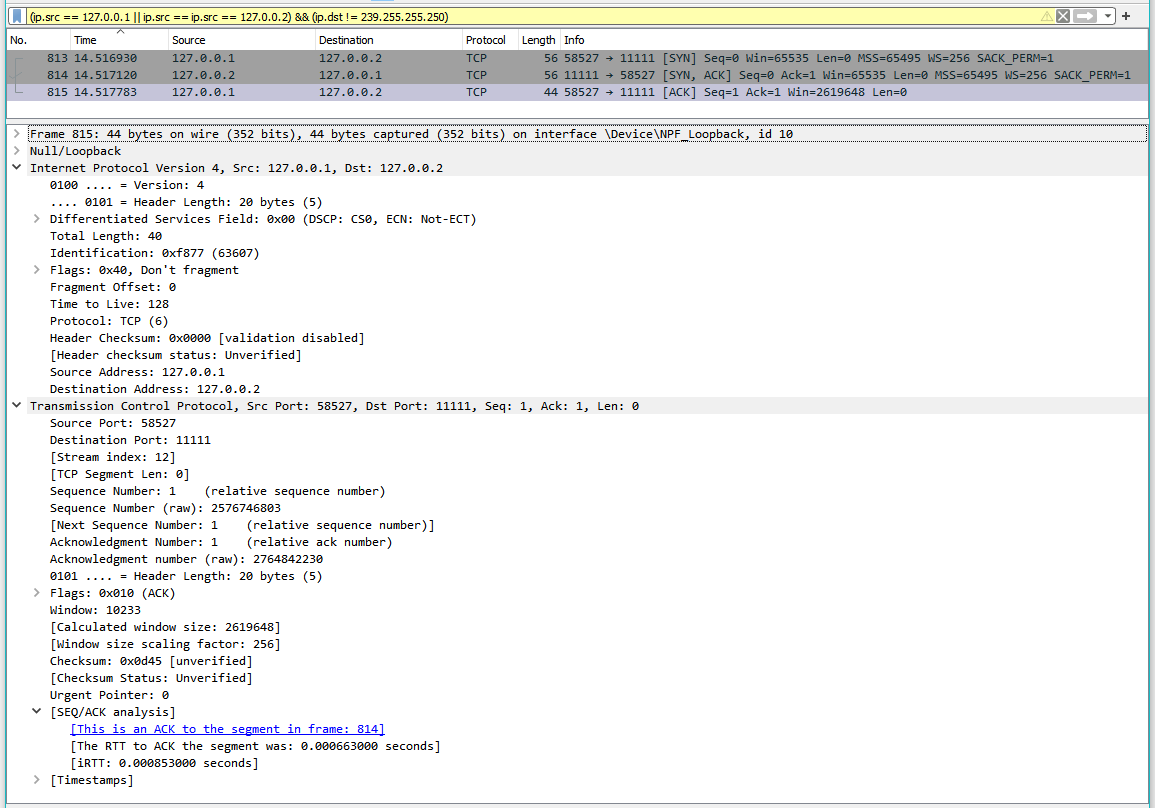
For reference: the source code is in wolfssl-examples\tls and each of the VisualGDB projects are in separate subdirectories of VisualGDB-tls:
C:\workspace\wolfssl-examples>tree
+---certs
| +---1024
| +---crl
+---tls
| +---VisualGDB-tls
| +---client-tls13
| | +---Debug
| +---server-tls13
| +---Debug
Note that when using make to build the examples in place for Linux, there are hard-coded file references to refer to the adjacent certs directory
for some files. For example:
#define CERT_FILE "../certs/client-cert.pem"
#define KEY_FILE "../certs/client-key.pem"
#define CA_FILE "../certs/ca-cert.pem"
In order for VisualGDB to also build to that directory, we use ../../ for the Binary Directory setting instead of the default Debug or Release subdirectories.
NOTE: The ../../ directory will likely change, as the clean process does not work so well. Fortunately the clever folks at sysprogs
have a circuit breaker in place to help prevent shooting oneself in the foot. For more details, see the wolfssl-examples PR 298 Comment.
make CONFIG=Debug clean
rm -rf ../../
rm: refusing to remove '.' or '..' directory: skipping '../../'
make: *** [Makefile:238: clean] Error 1
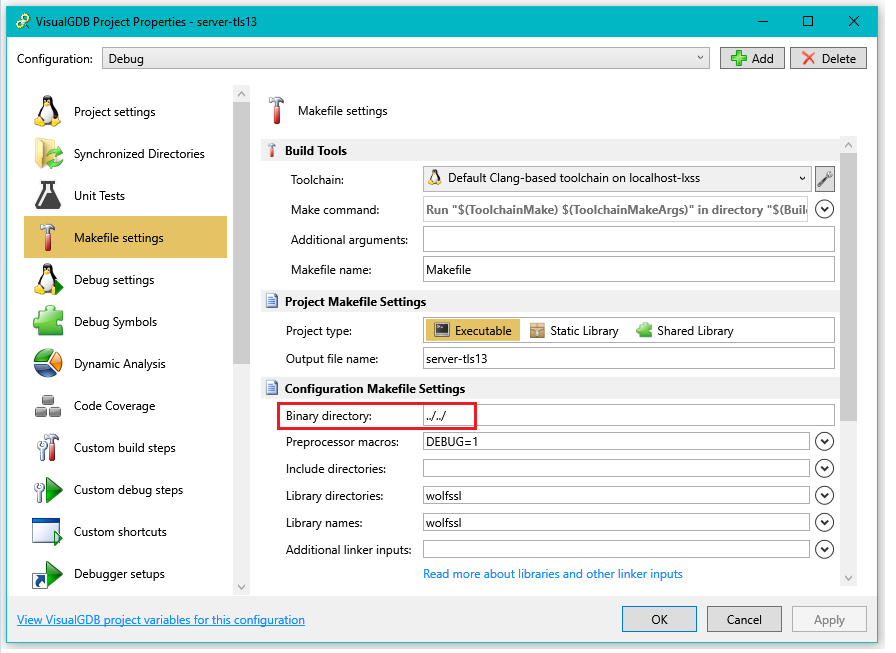
There are some setup steps for our secure channel, but no packets sent.
/* Initialize wolfSSL */
if ((ret = wolfSSL_Init()) != WOLFSSL_SUCCESS) {
fprintf(stderr, "ERROR: Failed to initialize the library\n");
goto exit;
}
/* Create and initialize WOLFSSL_CTX */
if ((ctx = wolfSSL_CTX_new(wolfTLSv1_3_client_method())) == NULL) {
fprintf(stderr, "ERROR: failed to create WOLFSSL_CTX\n");
ret = -1; goto exit;
}
/* Load client certificate into WOLFSSL_CTX */
if ((ret = wolfSSL_CTX_use_certificate_file(ctx, CERT_FILE, WOLFSSL_FILETYPE_PEM))
!= WOLFSSL_SUCCESS) {
fprintf(stderr, "ERROR: failed to load %s, please check the file.\n",
CERT_FILE);
goto exit;
}
/* Load client key into WOLFSSL_CTX */
if ((ret = wolfSSL_CTX_use_PrivateKey_file(ctx, KEY_FILE, WOLFSSL_FILETYPE_PEM))
!= WOLFSSL_SUCCESS) {
fprintf(stderr, "ERROR: failed to load %s, please check the file.\n",
KEY_FILE);
goto exit;
}
/* Load CA certificate into WOLFSSL_CTX */
if ((ret = wolfSSL_CTX_load_verify_locations(ctx, CA_FILE, NULL))
!= WOLFSSL_SUCCESS) {
fprintf(stderr, "ERROR: failed to load %s, please check the file.\n",
CA_FILE);
goto exit;
}
/* Create a WOLFSSL object */
if ((ssl = wolfSSL_new(ctx)) == NULL) {
fprintf(stderr, "ERROR: failed to create WOLFSSL object\n");
ret = -1; goto exit;
}
/* Attach wolfSSL to the socket */
if ((ret = wolfSSL_set_fd(ssl, sockfd)) != WOLFSSL_SUCCESS) {
fprintf(stderr, "ERROR: Failed to set the file descriptor\n");
goto exit;
}
Once everything is in order, we call wolfSSL_connect() to connect to the server:
/* Connect to wolfSSL on the server side */
if ((ret = wolfSSL_connect(ssl)) != WOLFSSL_SUCCESS))
And we see the following TLS 1.3 packets exchanged to initially establish a secure connection (packets starting at 36920 timestamp):
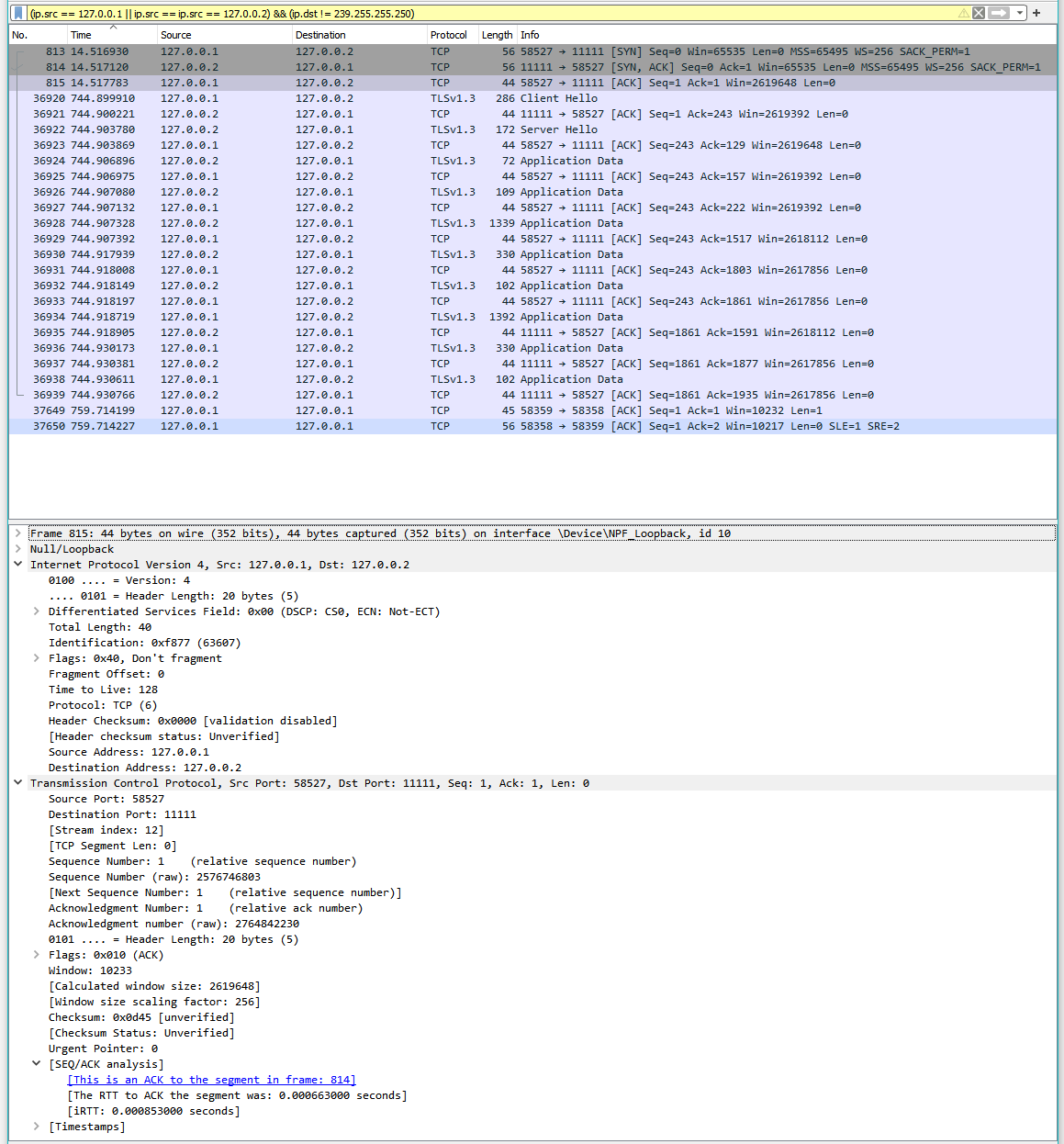
After we have established an encrypted connection, we can send data via wolfSSL_write():
/* Send the message to the server */
if ((ret = wolfSSL_write(ssl, buff, len)) != len)
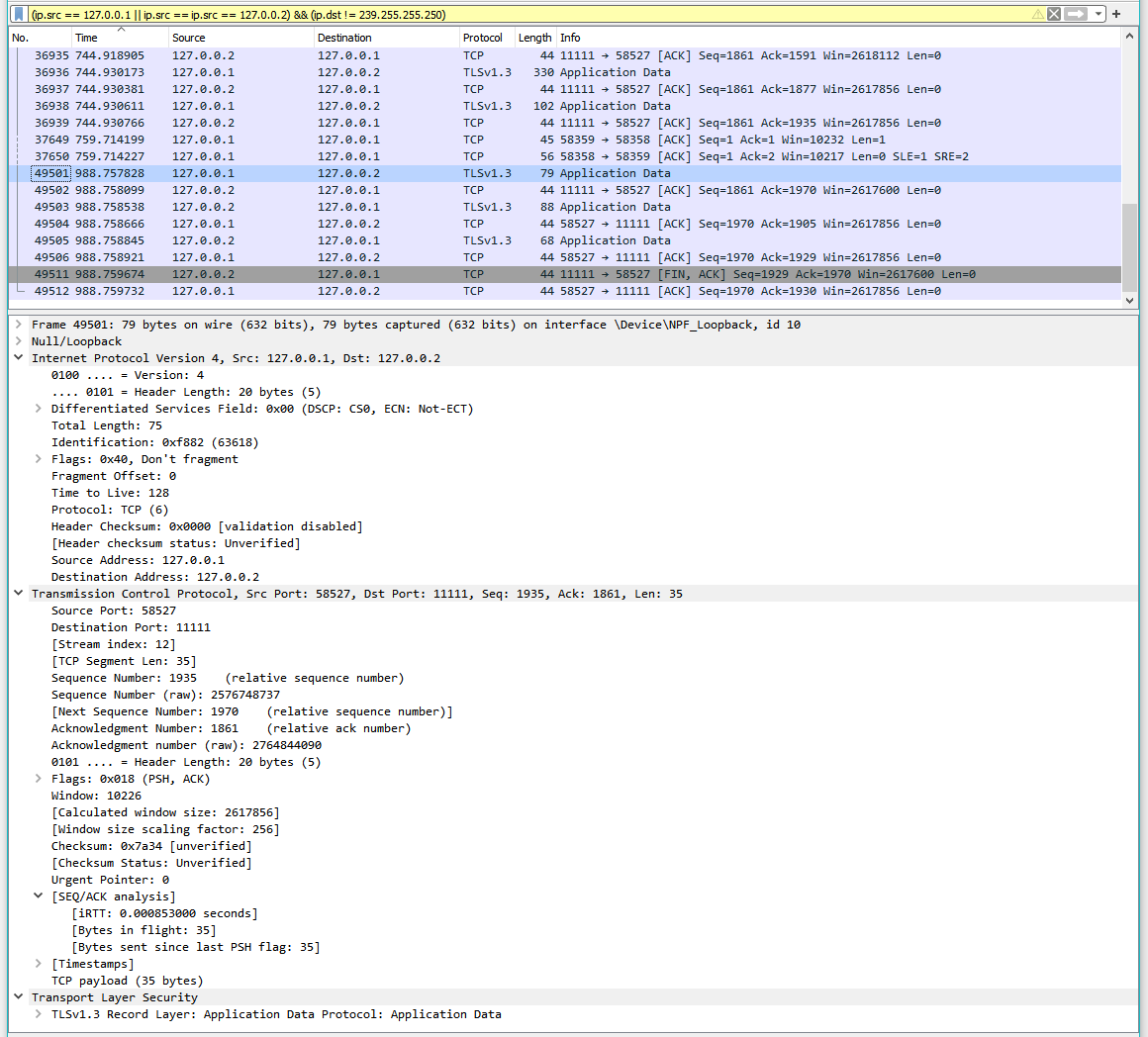
Here are two instances of Visual Studio, side-by-side, single-step debugging each of the client (left) and server (middle) examples, with WireShark packets on the right:
(click for full size pic)
That’s it!
Stay tuned, this is the first in the series of encryption blogs. Next up: connecting the linux client and server apps to embedded ESP32 devices.




